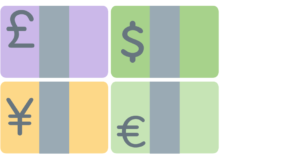Through March, the economic concerns over Russia’s invasion of Ukraine as well as growing pressure on central banks to hurry up interest rate rises were the main market drivers.
Because Russia is a major energy supplier, the invasion of Ukraine and the sanctions placed on Russia have disrupted supply chains, causing prices of commodities and energy to soar.

USA
In the US, equities (the share market) rose. The rise was due to an approved interest rate hike of 0.25% (the first increase since December 2018), and the news that the US market should expect 6 more interest rate rises this year. The US inflation rate was 8.5% for the 12 months ending March 2022, up from 7.9% in February. The US labour market is recovering, and wage growth continued, although wage growth still falls behind inflation.

Europe
European markets in March were largely influenced by the situation in Ukraine and concern over rising inflation. As Europe is a large importer of energy resources from Russia, European policymakers announced plans to reduce gas imports from Russia and to increase investments in sustainable energy.

Australia
In Australia, equities (the share market) rose 6.9% in March with all sectors up. The IT sector (+11.8%) was strong, as was the Energy sector (+10.1%) and Materials (+9.1%). Property (+1.4%) and Health Care (+2.5%) provided weaker, though still positive, returns.
The Reserve Bank of Australia has held its current policy settings, with RBA governor, Philip Lowe, previously flagging that the RBA will ‘take the time’ to assess the economy before raising interest official rates.

Currency and bonds
In March, the Australian Dollar appreciated against all major developed market currencies. Bond yields were volatile and finished higher, despite falling in the second half of March. The US 10 year Treasury yield, the UK 10 year government bond yield and the Australian 10 year government bond yield all ended March higher.

